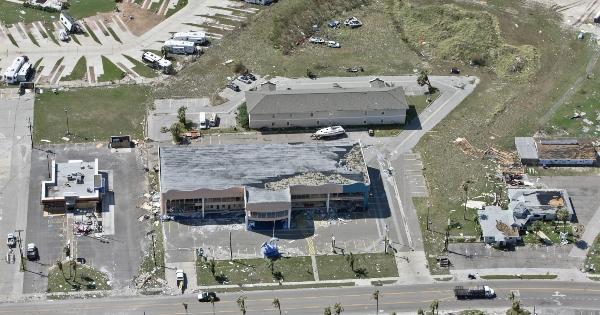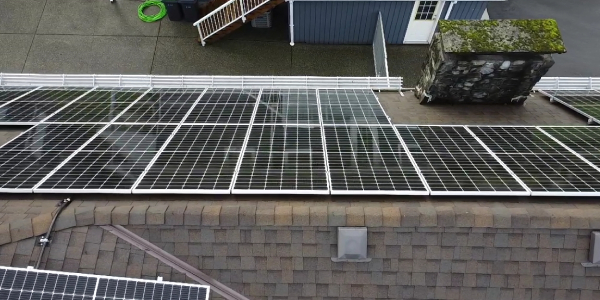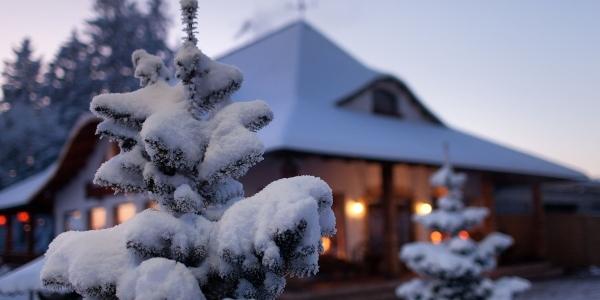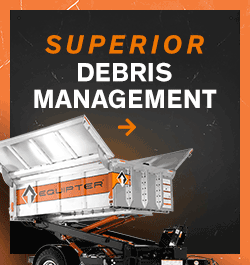Preparing Commercial Roofs for Hurricane Season

By Topps Products.
Historically, roughly three major hurricanes hit the United States every five years, and in recent years that average has increased.
Hurricanes are a serious threat to the Gulf and Atlantic coasts. In 2017 alone, hurricanes caused roughly $282 billion in damage to the United States and the Caribbean, with one storm, Harvey, accounting for almost half that total in Texas and Louisiana.
As hurricanes continue to threaten coastal states, property owners in these regions must reckon with the damage they can cause. No part of the building is more susceptible to hurricane damage than the roof, and special considerations should be made to help your customers’ roofs weather the storm. Below, we'll talk about how to prepare their roofs for hurricane season, and what they should do if a major storm hits.
Hurricane Season in the United States
The Atlantic Hurricane season lasts from June 1 to November 30. The states most vulnerable to hurricanes in the U.S. are Texas, Louisiana, Mississippi, Alabama, Florida, Georgia, South Carolina, North Carolina, and Virginia (though, as Irene demonstrated in 2011, hurricanes can make landfall along the entire Atlantic coast). As summer approaches, anyone with property along the Gulf and Atlantic coasts should be sure that they're prepared for the possibility of a major storm.
Hurricane Hazards
In order to protect against hurricanes, it's important to be aware of the specific hazards they pose and how they can damage a roof. There are four main hazards to consider:
Heavy Winds
Hurricanes produce sustained winds of at least 74 mph, and major storms produce winds upwards of 150 mph. While most roofs can hold up against typical wind gusts, the intense, sustained winds found in hurricane conditions can be severely destructive, tearing away unprotected roof components like flashing or gutters.
Rain
Hurricanes and tropical storms drop an average of 16 inches of rain, with about 75% of total rainfall occurring during a 24-hour period after hitting land. Especially destructive storms can bring much more: Hurricane Harvey, believed by meteorologists to be the greatest single rainfall event in U.S. history, dropped almost 52 inches of rain. Heavy, persistent rainfall can be catastrophic to weakened or compromised roofs, causing structural weakening and leakage.
Flash Flooding
One consequence of heavy rainfall is flooding, which in a hurricane can happen rapidly. Water pooling can put tremendous stress on flat roofs, as well as drainage systems, and flooding can make it difficult or impossible to access the roof for days.
Debris
Everything from tin cans to tree limbs can become deadly projectiles under hurricane force winds, exposing roofs to puncture and breakage.
How to prepare the roof for a hurricane
There are a number of measures you should take to make sure your customers’ roofs are in good shape to withstand a hurricane, both year-round and when a storm is approaching. Below are some recommendations.
Before a hurricane hits
Perform regular roof maintenance. Keeping a routine maintenance schedule for a roof is a good idea under any circumstances, but it can save a lot of time and energy, and prevent serious damage, in the event that a hurricane hits the area. Check the roof regularly for wear and disrepair, especially around seams, joints, and flashing, and remove loose items and debris. Replace any rusted metal components or rotted wood, especially around curbs.
Remove overhanging tree branches. If you notice overhanging branches, recommend that your customer have a tree service remove any limbs or weakened trees that could damage your roof in a high-wind storm.
Clean the gutters. Clean their gutters and remove blockage or clutter. It's also important to keep make sure the roof is clean, so potential obstructions like leaves and dirt can't make it into the drainage system. Water pooling from blocked drains can be severely damaging. Also, confirm that gutters and drainpipes are properly anchored, and replace any rusted components.
What to do when a storm is on the way.
Storm inspection. Check all roof-mounted equipment, such as air conditioners, satellite dishes, etc., to be sure that they are tightly and properly anchored. Check vents and stacks for the same, and make sure all flashing is properly secured. Remove any debris and loose items—they can clog drains, damage buildings, and potentially injure someone if taken away by wind.
Check for signs of rust, rot, or damage, including leaky seams, loose joints, and gaps. Regular inspection and/or restoration should prevent this kind of wear, but it's important to confirm that the roof is in good shape before a storm, and to repair any damage immediately.
Check the drainage system. Make sure that the gutters and drainpipes are poised to handle heavy rainfall by checking for blockage and pooling. Make sure that gutters and roof-mounted equipment are properly braced for high winds with straps designed to anchor them to the structure.
Protect skylights. If the roof has skylights, be sure they are covered with plywood or caps, to prevent breakage and potential flooding.
Secure hatches. Confirm that access hatches are adequately secured.
Secure lightning protection systems. If the roof has a lightning protection system, confirm that all cables and aerials are connected and properly secured. Disconnected cables will prevent the system from functioning properly, exposing the building to fire danger, and loose equipment can become airborne in high winds.
Prepare for after the storm.
Even the best prepared roof can suffer some damage from a major hurricane. You may want to take steps beforehand to make any action after the storm easier. Consider scheduling a post-storm inspection before the hurricane hits and be sure to document the condition of your roof. Many insurance policies raise deductibles on damage inflicted by named storms, so it's a good idea to review your policy and budget for repairs if you can.
What to do after the storm.
Inspect and assess. Have your customers check on the roof damage by sending you photos. They should pay special attention to vents and stacks, flashing, seams, joints, and equipment.
Check for leaks. Water is a persistent creature, and it can find its way through spaces imperceptible to a routine post-storm inspection. Have the building owner report if there are signs of roof leakage in order to prevent mold or water damage.
Report it to their insurance company. If there is roof damage, they will want to get the claims process going as soon as possible, since they will likely be entering a very long queue of property owners who have sustained damage.
Conclusion
Hurricanes are a serious and inevitable threat to people and property along America's coasts. Major storms can cause billions of dollars in damage, and no part of your building is more exposed than your roof. But with diligent preparation, including regular maintenance and restoration, hurricanes can be withstood, and roof damage mitigated.
Discover the benefits of becoming a Topps® Certified Installer
Original article source: Topps Products























Comments
Leave a Reply
Have an account? Login to leave a comment!
Sign In